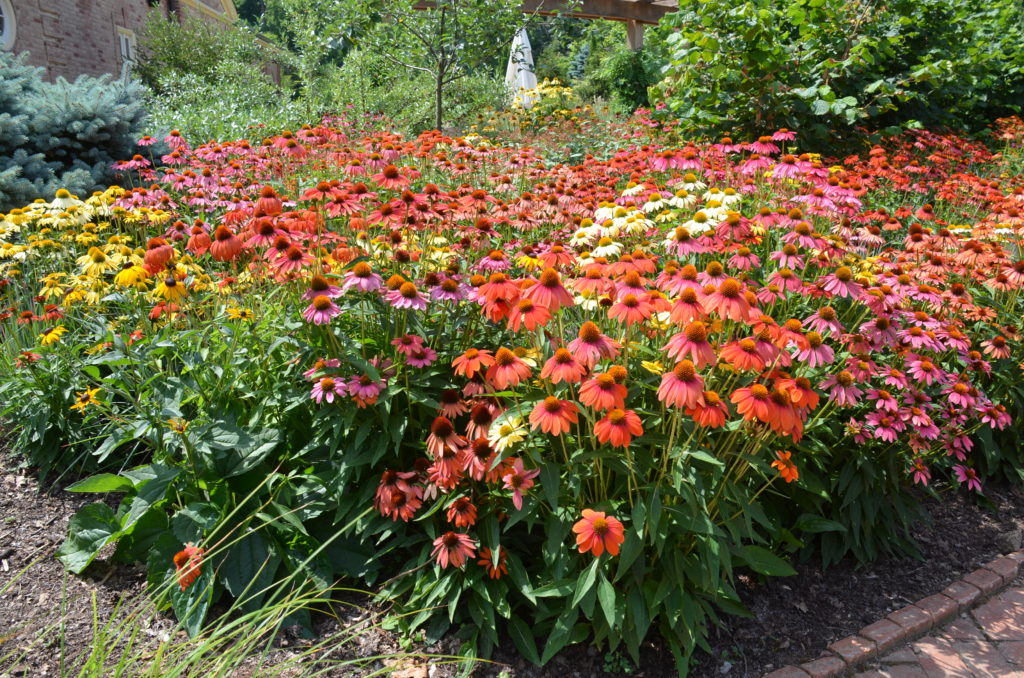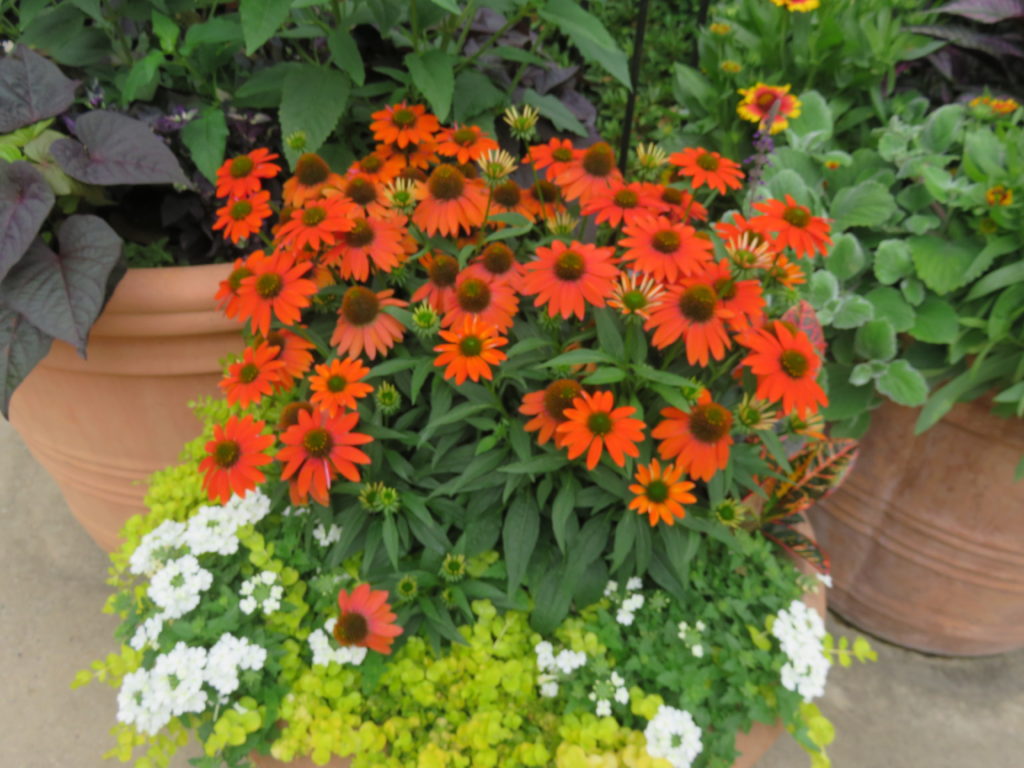
Coneflowers (Echinacea spp) are immensely popular native flowering perennials prized for their summer floral beauty. Nine species of Echinacea are native in North America and are found primarily in the central and southeastern U.S. Additionally, some populations of Echinacea angustifolia extend from the U.S. northwards into southcentral Canada.
Since the 1990s, a boom in Echinacea breeding has resulted in large numbers of new cultivars arriving at garden centers. The result has been an endless array in diversity, particularly in plant sizes and flower colors of coneflowers.
In 2020 MT Cuba Center in Greenville, DE released their most up to date ratings. This represents an updated test summary from their previous 3-year Echinacea variety trial in 2007-2009. The new report lists many more coneflower introductions and compares some newer cultivars against some of the tried-and-true top performers from the 2007-2009 trial.
In addition, MT Cuba conducted a pollinator survey to determine the cultivars that were most attractive to pollinating insects. This data was collected by their Pollinator Observation group. They tallied insect visitation to help determine ecological value of plants in our trials. For Echinacea, special attention was paid to the difference between single and double flowers in their ability to attract pollinators.
The best performing coneflowers in the trial are E. purpurea ‘Pica Bella’, E. ‘Sensation Pink’, E. ‘Santa Fe’, E. ‘TNECHKR’ (KISMET® Raspberry), E. ‘Snow Cone’, E. ‘POST301’ (Postman), E. ‘Glowing Dream’, E. ‘Purple Emperor’, E. purpurea ‘Fragrant Angel’, E. ‘TNECHKIO’ (KISMET® Intense Orange), E. ‘Balsomcor’ (SOMBRERO® Hot Coral), and E. ‘Julia’.
Important to gardeners: if you live in the mid-Atlantic States, results from the MT Cuba trial should be most useful and are posted online on the MT Cuba website. Midwest gardeners should look to recent Echinacea evaluations at the Chicago Botanical Gardens.


 Posted in
Posted in 
